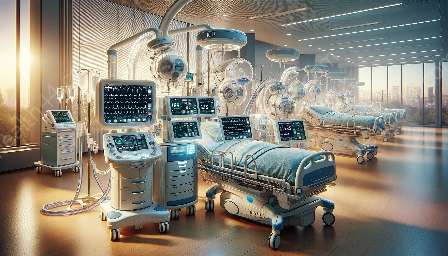Automated External Defibrillators (AEDs) are vital medical devices used in emergency situations to deliver an electric shock to the heart to restore its normal rhythm. AEDs play a crucial role in life support systems and are an essential component of medical devices & equipment.
Understanding AEDs
An automated external defibrillator (AED) is a portable electronic device that automatically diagnoses the life-threatening cardiac arrhythmias of ventricular fibrillation and ventricular tachycardia in a person. It can treat them through defibrillation, the application of electrical therapy, allowing the heart to reestablish an effective rhythm. AEDs are designed to be simple to use for the layperson, and they can provide life-saving treatment to individuals experiencing sudden cardiac arrest.
Compatibility with Life Support Systems
Automated External Defibrillators are seamlessly integrated into life support systems, where they serve as a critical component for providing immediate care in cardiac emergency situations. AED units are strategically placed in public spaces, workplaces, and healthcare facilities to ensure that rapid treatment can be administered to individuals experiencing sudden cardiac arrest.
Functionality and Benefits of AEDs
The main functionality of AEDs revolves around their ability to analyze the heart's rhythm and deliver an electric shock if necessary. These devices are designed to be user-friendly, providing clear audio and visual instructions to guide individuals through the process of delivering a shock. The benefits of AEDs include their ability to significantly increase the chances of survival for individuals experiencing sudden cardiac arrest when used promptly and correctly.
Integration with Medical Devices & Equipment
AEDs are an integral part of the broader spectrum of medical devices & equipment. They are designed to complement the emergency response protocols of healthcare systems, and their integration ensures a comprehensive approach to managing cardiac emergencies. Moreover, advancements in AED technology have led to the development of compact and portable devices that can be easily transported and utilized across various medical settings.
Conclusion
Automated External Defibrillators (AEDs) are invaluable tools in the realm of life support systems and medical devices & equipment. These devices have revolutionized the ability to provide immediate cardiac care, ultimately contributing to improved outcomes for individuals in need of emergency medical response. Their compatibility with life support systems underscores their essential role in emergency preparedness and public health.


